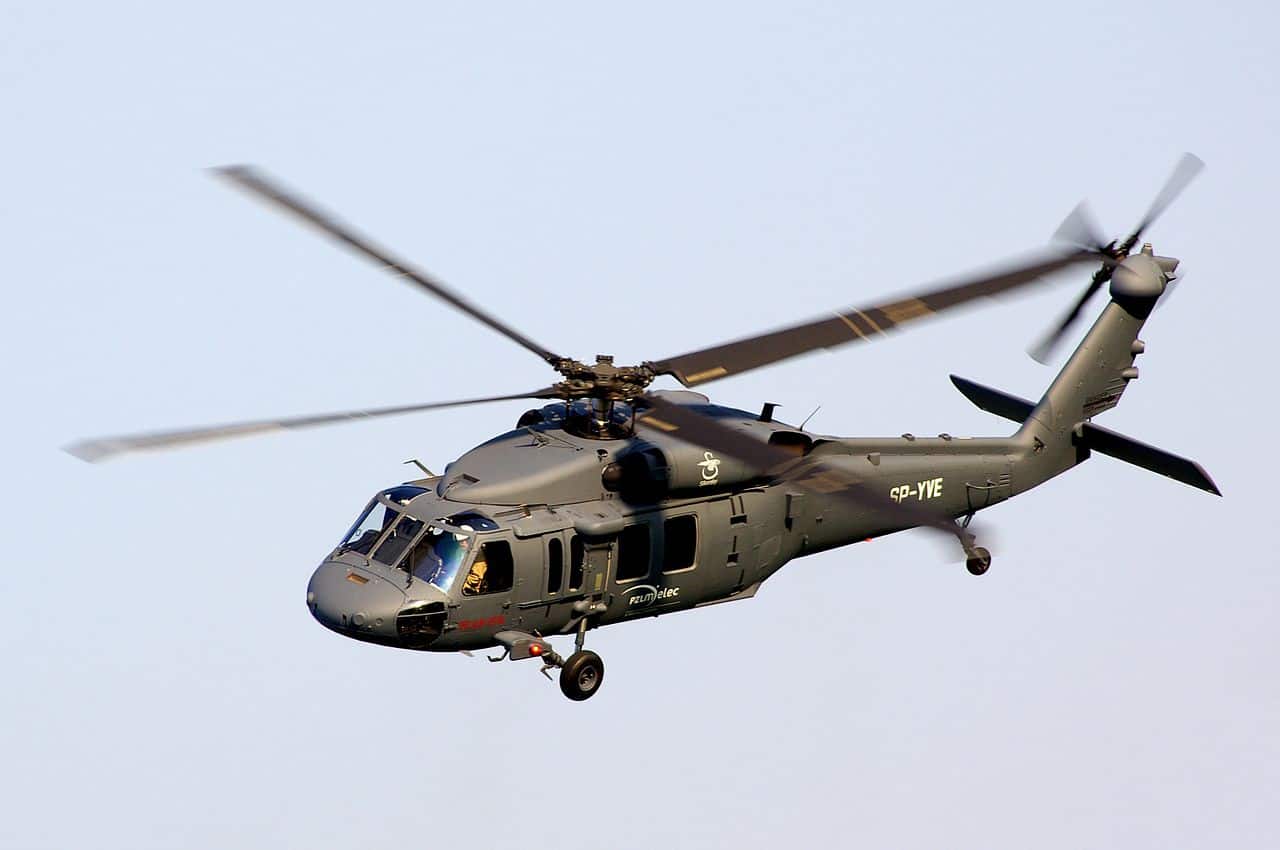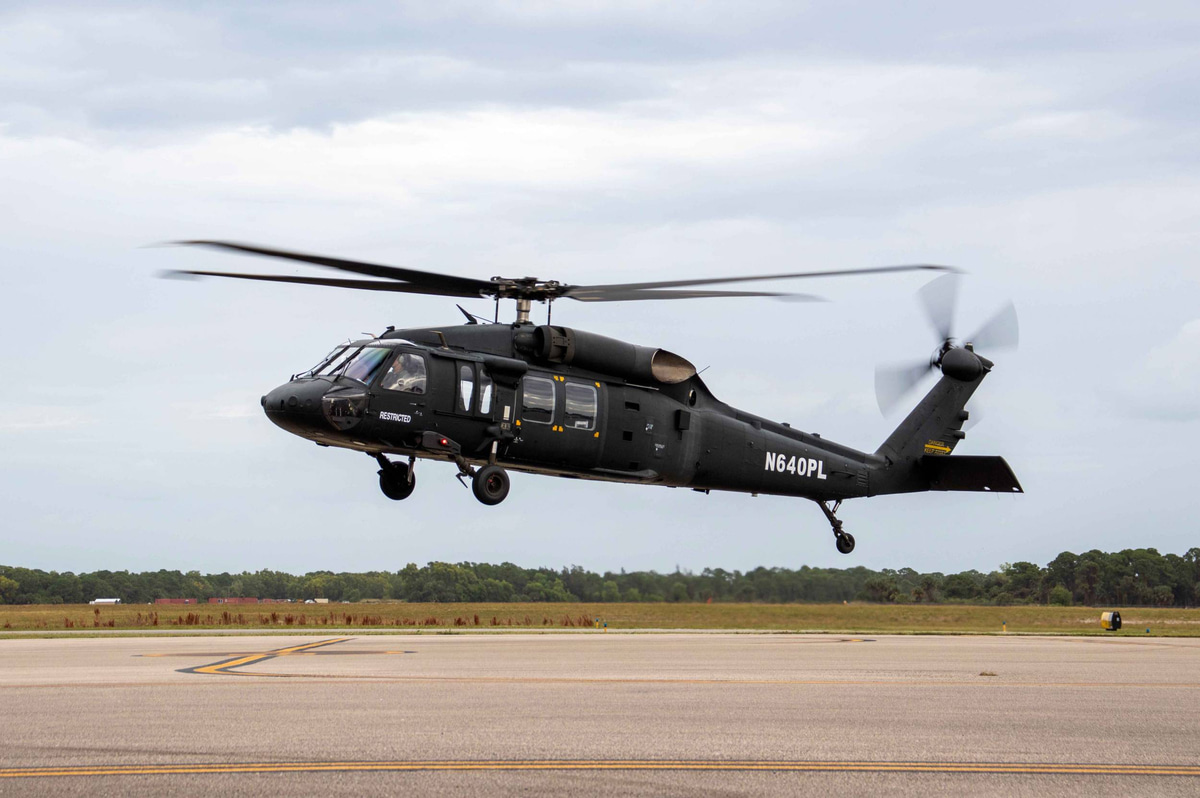Sikorsky S 70: Enhancing Helicopter Performance and Versatility
Sikorsky S 70: Enhancing Helicopter Performance and Versatility
Blog Article
High-Performance Multi-Role Rotorcraft Featuring Advanced Cabin Technologies and Integrated Sensing Unit Equipments
The world of rotorcraft innovation has seen noteworthy innovations in recent times, specifically in the realm of high-performance multi-role rotorcraft equipped with cutting-edge cabin innovations and effortlessly integrated sensor systems. These advancements have not only increased the functional abilities of rotorcraft but have also substantially affected modern air travel procedures on numerous fronts. From improved mission convenience to boosted operational performance, the convergence of sophisticated cockpit innovations and integrated sensor systems has ushered in a new period of possibilities for rotorcraft applications. In the adhering to discussion, we will certainly discover the development of rotorcraft innovation, look into the world of sophisticated cabin innovations, and take a look at the effects of incorporated sensor systems on the operational flexibility and performance of modern-day rotorcraft.
Development of Rotorcraft Technology
The development of rotorcraft innovation has actually been marked by considerable improvements in aerodynamics, materials, and propulsion systems, shaping the abilities and efficiency of contemporary rotorcraft. Aerodynamic enhancements have enhanced the performance and ability to move of rotorcraft, enabling raised rate, agility, and security throughout flight (sikorsky s 70). Advancements in materials, such as using composite products and progressed alloys, have actually resulted in lighter yet stronger rotorcraft structures, enhancing general efficiency and durability. Furthermore, improvements in propulsion systems, including a lot more powerful engines and ingenious propulsion technologies, have actually allowed rotorcraft to attain greater elevations, faster speeds, and higher hauls.
These developments have not just transformed the abilities of rotorcraft however have actually likewise broadened their applications throughout various markets, including military, business, and emergency solutions. The constant evolution of rotorcraft modern technology proceeds to drive technology in the area, pushing the borders of what is possible and shaping the future of upright flight.
Advanced Cabin Innovations
Building upon the fundamental innovations in the rules of aerodynamics, materials, and propulsion systems, the realm of rotorcraft modern technology currently moves emphasis in the direction of introducing Advanced Cabin Innovations. The combination of sophisticated modern technologies within the cabin setting plays a critical duty in improving the functional abilities, safety and security, and performance of contemporary rotorcraft. sikorsky s 70. Advanced Cockpit Innovations incorporate a broad array of features created to give pilots with boosted situational recognition, streamlined data administration, and user-friendly control user interfaces
Among the crucial improvements in cockpit layout is the execution of glass cockpits, which change conventional analog gauges with high-resolution displays. These digital systems supply adjustable designs, real-time information combination, and boosted readability, enabling pilots to gain access to essential information at a glimpse. Moreover, advanced avionics systems, such as fly-by-wire controls and increased truth screens, are revolutionizing just how pilots communicate with the airplane, allowing for precise control and improved decision-making capacities.


Including innovative cockpit innovations not only enhances pilot performance yet also adds to total objective efficiency and safety and security in complicated operational environments. By leveraging modern modern technologies within the cabin, rotorcraft producers are setting new requirements for operational excellence and goal success.
Integrated Sensor Equipments
With the evolution of rotorcraft technology, the integration of sophisticated Integrated Sensor Solution has become critical in boosting operational efficiency and safety. These Integrated Sensing unit Solutions include a broad array of technologies that offer crucial information for numerous functions such as navigation, security, targeting, and environmental monitoring. By perfectly integrating sensors like radars, video cameras, lidar, and infrared systems right into rotorcraft, drivers can take advantage of enhanced situational understanding, enhanced goal capacities, and decreased pilot work.
One trick benefit of Integrated Sensor Systems is their ability to gather real-time information and supply workable insights to pilots and objective drivers. Advanced radar systems can identify and track targets over long ranges, allowing for early hazard detection and efficient reaction planning. Furthermore, incorporating electro-optical and infrared cameras enables rotorcraft to conduct reconnaissance and security goals with precision and accuracy.
Essentially, the assimilation of innovative sensing unit modern technologies into rotorcraft not just enhances functional efficiency yet additionally contributes dramatically to general objective success and crew safety and security. As rotorcraft remain to evolve, the function of Integrated Sensing unit Systems will undoubtedly stay at the forefront of innovation in the aerospace market.
Operational Convenience and Effectiveness
Enhancing operational convenience and performance in rotorcraft is a natural development from the integration of innovative Integrated Sensor Solutions. By leveraging the data and understandings given by these cutting-edge sensor check systems, rotorcraft can optimize their efficiency throughout various goals and settings.
Operational adaptability encompasses the capability of rotorcraft to adapt to different roles and scenarios effectively. With innovative cockpit innovations and integrated sensing unit systems, rotorcraft can seamlessly change in between tasks such as search and rescue, medical evacuation, security, and more. This adaptability improves the rotorcraft's ability to satisfy varied functional demands without requiring substantial reconfiguration.
Effectiveness in rotorcraft procedures is critical for maximizing objective efficiency and source usage. Integrated sensor systems play a pivotal role in boosting operational efficiency by giving real-time information on climate condition, terrain mapping, target monitoring, and much more. This information makes it possible for pilots to make enlightened choices swiftly, maximize flight courses, preserve gas, and boost total goal efficiency.
Effect on Modern Aeronautics Workflow

Moreover, the assimilation of sophisticated sensing units promotes enhanced goal planning and execution, enabling rotorcraft to execute a large range of tasks with boosted accuracy. From search and rescue procedures to aerial firefighting and police objectives, the abilities of modern rotorcraft furnished with innovative cockpit technologies and incorporated sensor systems are unmatched.
In addition, the influence of these developments expands past functional efficiency to cost-effectiveness and sustainability. By enhancing flight paths, gas consumption, and upkeep schedules, high-performance rotorcraft equipped with sophisticated cabin technologies and sensors add to minimizing functional costs and environmental influence, making them indispensable properties in modern aeronautics procedures.
Conclusion
Finally, the high-performance great post to read multi-role rotorcraft with advanced cockpit technologies and incorporated sensing unit systems represents a considerable development in air travel innovation. These developments enhance functional convenience and performance, eventually impacting modern-day aviation operations in a positive method. The integration of these innovative technologies permits enhanced abilities and performance in different goal situations, showcasing the proceeded development of rotorcraft technology in the aeronautics industry.
The realm of rotorcraft innovation has actually seen significant advancements in current times, particularly in the realm of high-performance multi-role rotorcraft furnished with sophisticated cabin modern technologies and perfectly incorporated sensor systems. From boosted mission versatility to boosted operational effectiveness, the merging of advanced cockpit modern technologies and integrated sensing unit systems has actually ushered in a new period of opportunities for rotorcraft applications. In the complying with discussion, we will certainly explore the advancement of rotorcraft modern technology, dig into the world of sophisticated cockpit technologies, and take a look at the ramifications of incorporated sensor systems on the operational versatility and performance of modern-day rotorcraft.

Report this page